The Ultimate Guide to Hair Care: Tips for Healthy, Gorgeous Hair
Taking care of your hair is crucial not just for aesthetics, but also for your overall well-being. With so many hair care products and tools available today, understanding the best practices for maintaining healthy hair is more important than ever. This guide will provide you with essential tips and insights for keeping your locks looking their best, using professional-grade hair appliances and techniques.
Understanding Your Hair Type
Before diving into hair care routines, it's essential to understand your hair type. Hair types generally fall into four categories: straight, wavy, curly, and coily. Each hair type requires different care and styling techniques. For example, curly hair often needs more moisture compared to straight hair, which might require more protection against heat damage.
Straight Hair
Straight hair tends to become oily quicker because sebum (natural oil) travels down the hair shaft more effectively. For this hair type, it's important to use lightweight shampoos and conditioners and avoid heavy oil-based products.
Wavy Hair
Wavy hair can get frizzy, so moisturizing and anti-frizz products can be beneficial. Avoid over-washing to retain natural oils, and use a diffuser attachment on your hair dryer to enhance your waves.
Curly Hair
Curly hair is more prone to dryness, so deep conditioning treatments are a must. Use sulfate-free shampoos and conditioners, and avoid brushing when dry to prevent breakage.
Coily Hair
Coily hair requires significant moisture and gentle handling. Opt for rich, hydrating products and use protective hairstyles to minimize damage.
Hair Washing and Conditioning
Regardless of your hair type, the way you wash and condition your hair can significantly impact its health.
How Often to Wash
Washing frequency depends on your hair type and lifestyle. Individuals with oily hair might need to wash more frequently, while those with dry or curly hair can go longer between washes. Generally, washing every 2-3 days is a good balance for most hair types.
Choosing the Right Shampoo and Conditioner
Selecting the right shampoo and conditioner is crucial. Look for products that are formulated for your specific hair type and concerns. For example, if you have color-treated hair, opt for color-safe shampoos and conditioners.
Proper Washing Technique
When washing your hair, focus on the scalp to remove dirt and oil. Use your fingertips (not nails) to gently massage the shampoo into your scalp. Rinse thoroughly to avoid product buildup, then apply conditioner, focusing on the ends of your hair and leaving it in for the recommended time before rinsing.
Protecting Your Hair from Heat
Heat styling tools like straighteners and curlers are fantastic for achieving various hairstyles, but they can also cause damage if not used correctly.
Use Heat Protectant
Always apply a heat protectant spray or serum before using heat styling tools. These products create a barrier between your hair and the heat, reducing the risk of damage.
Correct Temperature Settings
Most professional-grade hair appliances come with adjustable temperature settings. Use the lowest effective temperature for your hair type to minimize heat exposure. For fine hair, stay below 300°F; for medium or wavy hair, 300-350°F; and for thick or coarse hair, 350-400°F.
Limit Heat Usage
Avoid using heat styling tools every day. Embrace natural hairstyles and use heat-free methods like braiding or twisting overnight for curls and waves.
Post-Heat Styling Care
After using heat styling tools, it’s essential to provide extra care to maintain healthy hair.
Use Nourishing Products
Apply nourishing and hydrating products like serums and oils to maintain moisture levels and repair any damage caused by heat styling.
Regular Trims
Getting regular trims can prevent split ends and keep your hair looking healthy. Aim to trim your hair every 6-8 weeks.
Silk or Satin Pillowcases
Sleeping on a silk or satin pillowcase can reduce friction, preventing breakage and frizz. It’s a small change that can make a big difference in your hair’s health over time.
Healthy Lifestyle Habits for Great Hair
Your hair's health is also influenced by your overall lifestyle.
Balanced Diet
A balanced diet rich in vitamins and minerals supports hair health. Foods high in protein, iron, and omega-3 fatty acids, such as fish, nuts, and leafy greens, are particularly beneficial.
Stay Hydrated
Hydration is crucial for maintaining healthy hair. Drinking plenty of water ensures that your hair remains moisturized from the inside out.
Stress Management
Stress can negatively affect your hair, leading to issues like hair loss. Engage in regular physical activity, meditation, or other stress-relief techniques to maintain a healthy state of mind and body.
Conclusion
Achieving and maintaining gorgeous, healthy hair involves a combination of using the right products, applying proper techniques, and embracing a healthy lifestyle. By understanding your hair type and catering to its specific needs, you can ensure that your locks stay vibrant and strong. Professional-grade hair appliances can be your best allies in this journey, provided they are used correctly and safely. Take these tips to heart and you'll be well on your way to having the hair you've always dreamed of.





